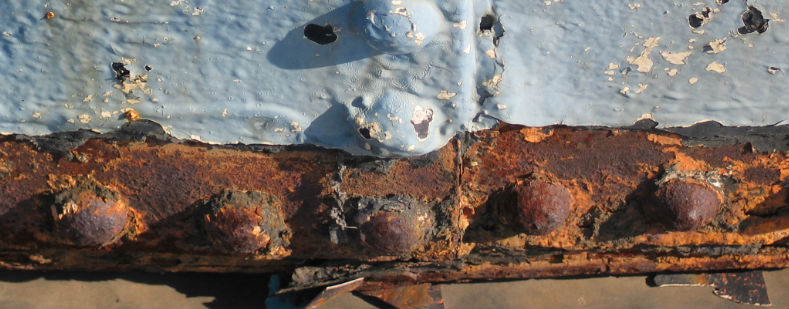Corrosion is everywhere - from a speck of rust on a bridge’s bolt to the advanced chemical erosion of a process pump, to blistering paint on a building’s structural steel, fences, and railings. When coatings fail and metal components oxidize, property and infrastructure risk further damage. Corrosion weakens metal from the outside in - untreated metal can rust away completely, leaving behind gaping holes.
In 1943, NACE International was founded (originally as “National Association of Corrosion Engineers”) by 11 corrosion engineers looking to bring more awareness to the damage done by rust. For the last 75 years, NACE has been educating engineers, inspectors, and others through training and awareness programs. NACE International is considered to be “The Worldwide Corrosion Authority.”
Corrosion is defined by NACE to be “a naturally occurring phenomenon commonly defined as the deterioration of a material (usually a metal) that results from a chemical or electrochemical reaction with its environment. Simply put, corrosion is the natural deterioration that results when a surface reacts with its environment. Different surfaces, environments and other factors add complexity to the equation.”
If a metal is left to corrode in the elements, the surface will move through the four stages of rust (codified by SSPC-VIS 1 and SSPC-VIS 3). Rust is graded A through D, with Grade A Rust being the least impactful. Where Grade D rust has formed, the metal will be heavily pitted, in some cases leading to structural issues. All types of rust can be removed using abrasive blasting. Abrasive blasting media removes rust oxidization by colliding with the surface at a high rate of speed, leaving behind only the good steel underneath the now removed surface rust.
Simply coating over a corroded substrate without removing what has already rusted will not eliminate further degradation of the metal. If a coating is applied to an already corroded surface without proper preparation, there is a very high chance of coating failure and continued oxidation. In some cases, coating over a surface with surface rust can actually increase corrosion rates.
Corrosion in Difficult Locations
The oxidation of steel and iron can happen anywhere. The costs of managing corrosion once it has started can be substantial. Imagine a parking garage that is made of concrete. This concrete must contain rebar, or other kinds of structural steel inside the concrete. As time passes, this uncoated rebar will corrode inside the cement, weakening both the support structure and creating cracks throughout the concrete as rebar rusts and expands.
Another place corrosion happens but is tough to access is under insulation. An example of this is a corroded metal pipe that has been covered in insulation. This kind of corrosion is so common that it’s called “corrosion under insulation.” Corrosion Under Insulation (or CUI Corrosion) is a problem many asset owners face in the oil, gas, and energy industries.
When faced with removing corrosion under insulation or corroding rebar, Sponge Media is a frequently used option. Abrasive blasting with Sponge Media allows a blaster to work with a surgical precision, removing corrosion in the affected area only. This allows for quick corrosion control and recoating of the substrate while reducing worker and bystanders exposure to dust.
Preventing Corrosion Before It Starts
The costs of managing corrosion once it has started can be staggering. It’s much easier and much less expensive to take the proper precautions to prevent corrosion decay before it starts. To prevent rust from most metallic objects from boats to bridges, two main steps must be followed.
To achieve good results one must clean the surface metal and weld seams of all chlorides and other contaminants that can directly result in rust developing or inhibit coating adhesion. The second step is the correct application of a protective coating. Many coatings will specify a “surface profile.” The required surface profile varies from coating to coating mostly dependent on how thick the coating will be applied and its percent of solvent. Some surface preparation solutions (including abrasive blasting with Sponge Media) clean the surface while simultaneously creating a coating’s required surface profile.









